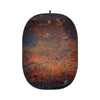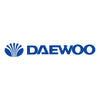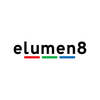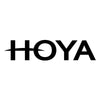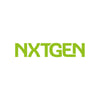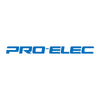Spotlight Comparison - The MINI30D vs Aperture Light Storm
Small spotlights can be a great tool for many situations and with many options available on the market it can be difficult to decide which is suitable for your needs. In this blog we will compare our PIXAPRO MINI30D against other similar lights on the market, including the Dedolight DLH-4 and Aputure Light Storm LS-mini20c.
Power Output
The brightness of the light can be the first consideration when choosing, this helps to determine what you can achieve with the light and is very important. This is difficult to compare directly as both the PIXAPRO MINI30D and Aputure LS-MINI20C are LED, whereas the Dedolight DLH-4 uses a halogen bulb. This means that the Dedolight will operate at higher wattages, but this doesn’t mean its brighter, it can mean the opposite. When comparing LED to halogen as a general rule we say LED produces around 10x the wattage. So, for example in this case the MINI30D operates at 30W, we would say this is approximately 300W equivalent to halogen and the same for the Aputure. However, the Dedolight in this case produces 150W halogen so on this basis we would estimate that the MINI30D and LS-MINI20C are the brighter options.
The most accurate measure of output would be illuminance, for the MINI30D this would be 11,300 LUX @1m but for the LS-MINI20C it would be 4,200 LUX @1m both at the maximum focus. We cannot unfortunately compare the Dedolight in this case as it doesn’t have this figure.
You will also need to consider that halogen will operate at a much higher temperature compared to LED so using gels or any modifiers will be very limited.
Functionality
This covers many different aspects; you may want more out of your light to give more flexibility and options. Both LED options the MINI30D and LS-MINI20C will allow you to control the colour temperature from tungsten balanced 3200K to daylight balanced 5600K, however as the Dedolight DLH-4 is halogen this will only give you around 3200K colour temperature.
All three lights will allow you to adjust the brightness and beam focus of the lights, but for beam focus they will have different intensities. The PIXAPRO MINI30D will range between 6° - 55°, the Aputure LS-MINI20C 20° - 60° and the Dedolight DLH-4 4.5° - 48°. This means that the Dedolight will give you a narrower option by just 1.5° compared to our MINI30D but the Aputure will have a more widespread light at 60° max compared to the MINI30D’s 55°. So, if you are looking for a happy medium of both the MINI30D is by far the better option, giving best of both worlds and not much difference in the maximum or minimum range.
Dimensions
All three lights are compact, the MINI30D and LS-MINI20C don’t have any separate control panel the DLH-4 does, this means it can be slightly more cumbersome. However, in general size the MINI30D is the smaller unit at just 215.0 x 108.0 x 100.0 mm compared to the Aputure 231.0 x 122.0 x 97.0 mm.
Price
The biggest deciding factor has to be price, you want to get the most out of your budget as possible whilst still giving the results you desire. The PIXAPRO MINI30D costs just £249.99 for the base light, with modifiers available to alter the light. The Aputure Light Storm LS-mini20c retails at around £300-£350 and lastly the Dedolight DLH-4 retails for around £550.
Added Features
In terms of added features they all have similar functionality however in this case the MINI30D also has a large array of different accessories to modify and add another dimensions to the capability of the light, these include softboxes, gobos and many more. To see the full range of accessories compatible with the MINI30 please CLICK HERE.
Conclusion
All are great lights and will give the results you desire but the MINI30D gives the same features and in some cases, more functionality than the other options whilst being in a more compact form factor costing less at just £250. With PIXAPRO you will also get a 2 Year UK warranty to give more peace of mind with your purchase.

































































































































